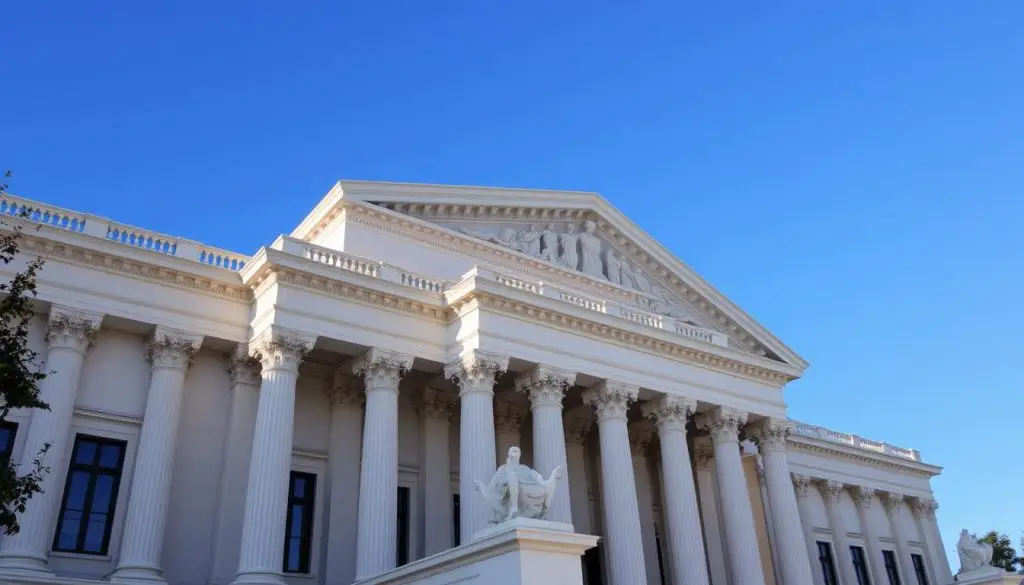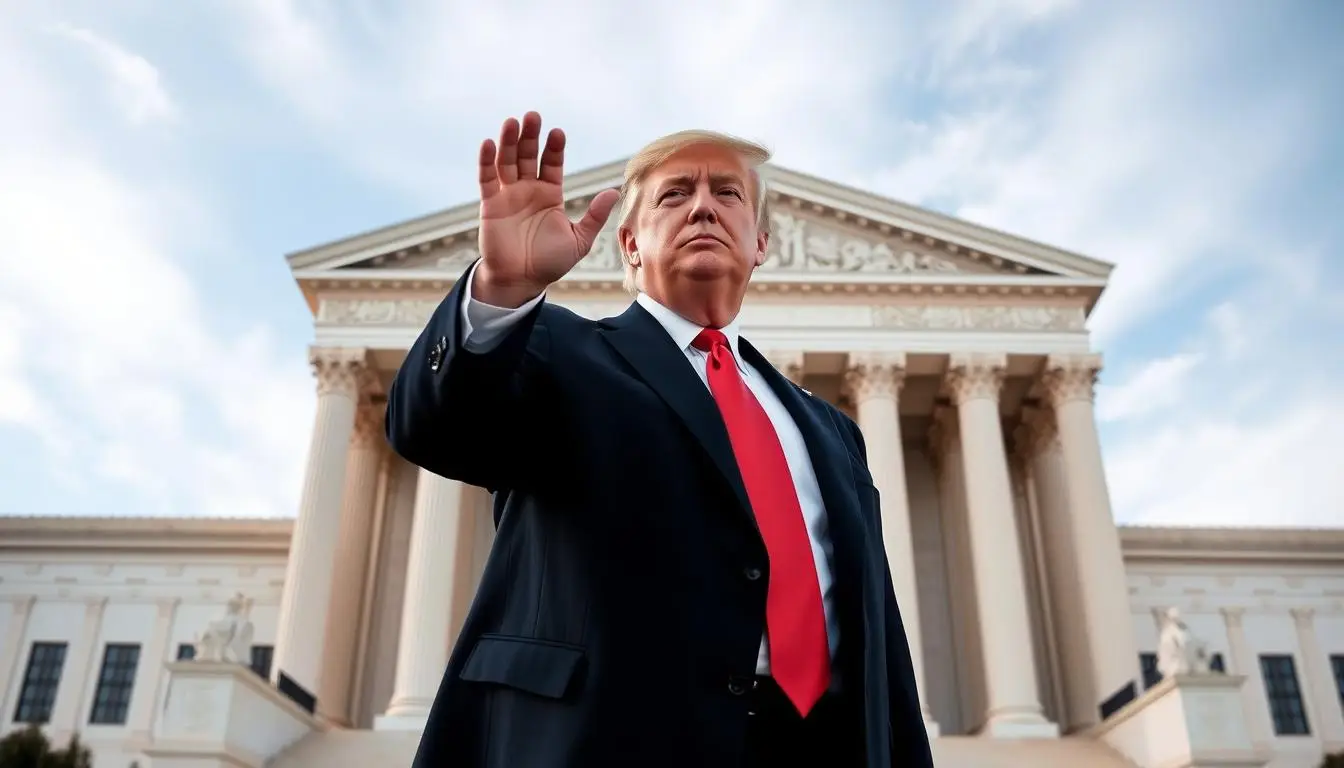Supreme Court Tried and Failed to Stop Trump’s Tariffs
Explore the potential for the Supreme Court to halt Trump’s tariffs and the implications for trade and legal precedents in our latest coverage.

Supreme Court Can stop Trumps Tariffs
Click to summarize this article.
Supreme Court: I’m writing this in a tough time. TV networks go dark, budgets stall, and families wait in long lines. Even Disney asked YouTube TV to bring back ABC for Election Day, offering a small measure of relief. Yet, Washington is stuck. A shutdown has lasted over a month, and the House and Senate can’t agree on any Politics.
Two judges ordered the USDA to use emergency funds for food. This was a kind of check on chaos. If courts can ensure food aid, can they also limit tariffs? The Supreme Court Can stop Trumps Tariffs—that’s the hope and fear.
Why does this matter? By late 2024, foreign owners had $24 trillion more in U.S. assets than Americans abroad. The European Union offered $600 billion, and Japan and South Korea promised $1 trillion. This is not just about money; it’s about jobs, prices, and trust. See this analysis of foreign investment and tariffs for more context.
I have mixed feelings about this. I want action, but emergency tools can be misused. The challenge is whether tariffs have become a problem in their own right. Will the Supreme Court draw a clear line, or will there be exceptions? What do we owe each other when law meets need?
Supreme Court Key Takeaways
- The Supreme Court can stop Trump’s Tariffs if it finds that emergency laws were stretched beyond their text.
- Shutdown stress, media blackouts, and court-ordered food aid show why limits on power matter.
- With trillions of dollars in global capital at stake, the Supreme Court’s authority over tariffs impacts prices and jobs.
- The Trump tariffs’ legal challenge turns on what emergencies allow—and what they do not.
- A clear Supreme Court decision on trade tariffs could restore predictability in trade policy.
- Courts can steady policy in crises, but they must balance urgency with constitutional guardrails.
What’s at Stake in the Supreme Court Ruling on Tariffs and Emergency Powers
I often think about everyday things, such as checkout lines and gas pumps. When we discuss tariffs, we’re really talking about how our daily lives are impacted. Prices change, budgets get tighter, and we wonder who gets to tax us and when.
Why the case matters: billions in tariff revenue and trillions in trade flows
Billions in tariff revenue are at risk, and trillions in global trade could also be affected. I imagine a busy shipping yard at dawn and wonder who will pay more by sunset. A review of trump tariffs is not just a legal issue—it impacts everything from groceries to electronics to fuel.
Families feel these changes first. If the Supreme Court changes trade policies, it could affect paychecks and prices. The impact is evident in warehouse invoices and at checkout counters, where every dollar counts.
The legal backdrop: IEEPA, the National Emergencies Act, and Congress’s power of the purse
The International Emergency Economic Powers Act was made for quick action in crises. The National Emergencies Act sets limits. But Congress controls the budget, which means every decision must be accountable.
At this moment, the legality of the Trump administration’s tariffs hinges on how far emergency powers can extend. Do we accept when urgency meets revenue, or do we pause to question where authority starts and ends?
For more insight into how these decisions could change taxing power, I looked at this report on the intersection of emergencies and.
Lower court findings: violations cited by the Court of International Trade and the Federal Circuit
Judges at the Court of International Trade and the Federal Circuit have previously tested executive trade moves. When actions exceeded the bounds of the law or skipped crucial steps, courts intervened.
These signals are important. A detailed review of trump tariffs will examine the text, follow procedures, and consider the budget. The question remains: how much freedom do emergency tools have without changing tax law by practice?
Key cases on the docket: Learning Resources Inc. v. Trump and Trump v. V.O.S. Selections
Learning Resources Inc. v. Trump and Trump v. V.O.S. Selections are key cases. They ask if emergency powers can be used to raise tariffs.
In simple terms, can rules turn into taxes under pressure? A Supreme Court decision on trade policies would set the standard. And with it, the legality of the trump administration tariffs would face a detailed review.
Supreme Court Can Stop Trump’s Tariffs.
I often wonder what consent means when things get tough and emotions run high. The Supreme Court can stop Trump’s Tariffs, but the urgency is real. In this moment, the Supreme Court and trade policies feel like a mirror. They show us who decides to grab power and at what cost?
Core question: Does IEEPA authorize tariff imposition without explicit congressional approval?
At the heart is a simple question that goes deep: Does IEEPA allow a president to impose tariffs without Congress’s approval? I think about how judges have demanded precise spending in past emergencies. They remind us that power needs boundaries. A Supreme Court decision on trade tariffs will speak to that rule in a voice we all will hear.
When I shop for basics, I feel that a tariff is not just a policy but a price on my cart. If the law says “regulate,” does that word carry the weight of “tax”? Or is that leap too far, even in a storm?
Arguments for limits: specificity in delegations and the Constitution’s taxation clause
Arguments for limits rest on clarity. The Taxation Clause puts revenue in Congress’s hands. Delegations must be specific when money flows from the public to the Treasury. That is why some say the Court should read IEEPA with care in this trump tariffs legal battle, not as a blank check for revenue.
I picture a narrow bridge over a wide river. If we cross it with a vague mandate, do we fall into a current that pulls law toward expedience?
Arguments for latitude: executive flexibility to “regulate” trade during emergencies
Others see a different map. They say emergencies demand speed, and IEEPA lets presidents “regulate” global transactions to guard national security. In their view, a tariff can be a shield, not a tax. That case thrives when threats move quickly and supply chains become weapons.
But tools reshape the hands that wield them. As the Supreme Court and trade policies evolve under pressure, the line between shield and levy blurs in the heat of action.
More Politics: Trump’s Nuclear Missile Tests
Implications for separation of powers: from INS v. Chadha to today’s emergency landscape
Separation of powers lives in the small print and the big moments. After INS v. Chadha trimmed the legislative veto, presidents gained leverage during emergencies. I feel that echo now, as courts become the final referee when Capitol Hill stalls. A Supreme Court decision on trade tariffs will have a ripple effect on agencies, markets, and dinner tables.
In the background, global money continues to move. By late 2024, foreigners owned far more U.S. assets than Americans held abroad, and allies pledged major capital. That flow of cash is part of the canvas painted in this foreign investment debate, and it colors how the Court may view consequences beyond the courtroom.
| Measure | Scale | Why It Matters in the trump tariffs legal battle |
|---|---|---|
| Foreign holdings vs. U.S. abroad | ~$24 trillion more in U.S. assets held by foreigners | Signals’ exposure to policy shocks shaped by the Supreme Court decision on trade tariffs |
| EU investment pledge | $600 billion | Shows allies’ stakes when the Supreme Court can stop Trump’s Tariffs or broaden its authority |
| Japan & South Korea pledge | $1 trillion | Highlights how the Supreme Court and trade policies influence strategic capital flows |
I sit with a final, human thought. Policy is a map, but families live on the terrain. Whether restraint or latitude prevails, this trade war legal battle will redraw the path we take when emergencies arise, and how we balance both urgency and consent.
Congressional Pushback and the Emerging Legal Battle Over Trade Policies
On Capitol Hill and at home, people wonder: who decides when emergencies last too long? The debate over the Supreme Court and trade policies is intense. If the Supreme Court intervenes, will it help or create more problems?
The core issue is clear. Some argue that the Supreme Court can block Trump’s tariffs. But others ask if Congress should decide first. As the legality of Trump’s tariffs is reviewed, a quiet debate is underway about power and process.
Bipartisan brief: more than 200 lawmakers argue IEEPA doesn’t permit revenue-raising tariffs
Over 200 lawmakers have filed a bipartisan brief. They say IEEPA was meant to protect, not to raise money. This view is central to the debate over the Supreme Court and trade policies.
They believe Congress should control the purse strings. If emergencies can fund themselves, what’s left of Congress’s power?
Expert views: a potentially massive blow to Congress or a push for clearer laws
Experts have different opinions. Some worry about a big loss of power for Congress. Others view it as an opportunity to make laws more straightforward.
Either way, the Supreme Court’s decision will impact us all. Clarity is key in this complex issue.
Political dynamics: GOP concerns about precedent and future executive use of tariff powers
Inside the GOP, there’s concern about setting a precedent. Today’s decision could be used by future presidents. This could lead to new challenges.
Some believe the Supreme Court can stop Trump’s tariffs. Not to block policy, but to set limits that all parties can agree on.
Aftereffects of INS v. Chadha: legislative veto limits and heightened presidential leverage
The impact of INS v. Chadha is still felt today. It limited the legislative veto, making every decision more critical. This choice affects us now.
When emergencies persist and tensions escalate, power shifts to the president. The legality of Trump’s tariffs reflects this shift. It raises questions about the flexibility of our system.
I don’t have all the answers. I’m listening, watching, and asking about finding a balance. We need to act quickly without forgetting who controls the purse and why it matters.
Supreme Court Conclusion
I often see a worker in Chelsea, Massachusetts, sorting cans. This is while lawyers debate whether $5.25 billion can be moved today. It shows how important boundaries are.
When Disney asks YouTube TV to bring back ABC for Election Day, it highlights the importance of access and accountability. The same is true for tariffs. A Supreme Court decision on trade tariffs will impact various areas, including checkout lanes and ports.
The questions raised are straightforward yet profound. Should broad emergencies give broad power, or should Congress decide? In the battle over Trump’s tariffs, billions of dollars in revenue and trillions in trade are at stake. The court’s decision will either limit crisis tools or make them a regular part of life.
Drift has shown us what happens when things go wrong. We’ve seen delays in Congress, Senate votes that fail to pass, and benefits being delayed for millions. The Justice Department warns that the costs need to $8–$9 billion a month. Courts are like lighthouses, guiding us through tough times but not calming the storm.
If the Court limits IEEPA, Congress must create clear rules for emergencies. This way, we can meet needs without losing consent. If not, tariffs could become like taxes, raising doubts about their legality.
I’ve read the briefs and listened to the warnings. I think about the lines we draw to live together. Do we want power to grow where fear is loudest, or to be shaped where debate is slowest? The better path is clear rules over convenience.
That’s why the Supreme Court can stop Trump’s tariffs—and should. For more on the arguments heading to the bench, see this overview of the Supreme Court hearing and its implications for trade tariffs.









